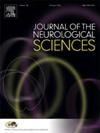扩大临床应用的血液神经丝轻链(bNfL):一个多学科的诊断工具
IF 3.2
3区 医学
Q1 CLINICAL NEUROLOGY
引用次数: 0
摘要
血中蛋白神经丝轻链(bNfL)已成为神经系统疾病诊断、监测和预后的重要生物标志物。然而,它在神经学以外的常规临床实践中的潜在应用仍未被探索。本研究旨在通过调查bNfL的扩大使用来检验其临床效用(i)评估其融入门诊和门诊常规实践,(ii)在学术医院内外,以及(iii)在不同医学学科和不同部门。方法:本研究检查了两个为临床常规提供bNfL测量的大型临床化学实验室的数据:德国柏林的劳工实验室和瑞典Sahlgrenska大学医院的临床神经化学实验室。总之,这项大规模回顾性研究获得了2021年至2023年间n = 22122人的bNfL测量数据。结果我们的研究结果显示:(i)门诊诊所和(ii)非学术医疗机构正逐渐将bNfL纳入其常规实践;(iii)随着时间的推移,bNfL的应用已扩展到越来越多的医学学科,表明它作为一种诊断工具的重要性日益增加,而不仅仅是神经病学。值得注意的是,心脏病科、血液科/肿瘤科和重症监护室等部门越来越多地将bNfL纳入其临床曲目。本研究强调了易于获取的bNfL对临床常规的发展影响,不仅增强了神经科医生的诊断工具,而且为学术环境内外的各种医学领域提供了有价值的见解。本文章由计算机程序翻译,如有差异,请以英文原文为准。
The expanding clinical utility of blood neurofilament light chain (bNfL): a multi-disciplinary diagnostic tool
Background
The protein neurofilament light chain in blood (bNfL) has become a valuable biomarker in the diagnosis, monitoring, and prognosis of neurological diseases. However, its potential use beyond neurology in routine clinical practice remains unexplored. This study aimed to examine the clinical utility of bNfL by investigating its expanding use (i) assessing its integration into in- and outpatient routine practice, (ii) both within and outside of academic hospitals, and (iii) across different medical disciplines and various departments.
Methods
This study examined data from two large clinical chemistry laboratories that provide bNfL measurements for the clinical routine: Labor Berlin, Germany, and the Clinical Neurochemistry Laboratory at Sahlgrenska University Hospital, Sweden. Together, this large-scale retrospective study acquired data on bNfL measurements from n = 22,122 individuals during the years 2021 to 2023.
Results
Our findings revealed that (i) outpatient clinics and (ii) non-academic healthcare settings are gradually integrating bNfL into their routine practice and (iii) its use has expanded across an increasing number of medical disciplines over time, indicating its growing importance as a diagnostic tool, beyond neurology. Notably, departments such as cardiology, hematology/oncology and intensive care units increasingly incorporated bNfL into their clinical repertoire.
Discussion
This study underscores the developing impact of easily accessible bNfL on clinical routine, not only enhancing neurologists' diagnostic tools but also offering valuable insights into diverse medical fields, in- and outside the academic environment.
求助全文
通过发布文献求助,成功后即可免费获取论文全文。
去求助
来源期刊

Journal of the Neurological Sciences
医学-临床神经学
CiteScore
7.60
自引率
2.30%
发文量
313
审稿时长
22 days
期刊介绍:
The Journal of the Neurological Sciences provides a medium for the prompt publication of original articles in neurology and neuroscience from around the world. JNS places special emphasis on articles that: 1) provide guidance to clinicians around the world (Best Practices, Global Neurology); 2) report cutting-edge science related to neurology (Basic and Translational Sciences); 3) educate readers about relevant and practical clinical outcomes in neurology (Outcomes Research); and 4) summarize or editorialize the current state of the literature (Reviews, Commentaries, and Editorials).
JNS accepts most types of manuscripts for consideration including original research papers, short communications, reviews, book reviews, letters to the Editor, opinions and editorials. Topics considered will be from neurology-related fields that are of interest to practicing physicians around the world. Examples include neuromuscular diseases, demyelination, atrophies, dementia, neoplasms, infections, epilepsies, disturbances of consciousness, stroke and cerebral circulation, growth and development, plasticity and intermediary metabolism.
 求助内容:
求助内容: 应助结果提醒方式:
应助结果提醒方式:


